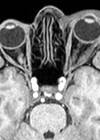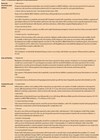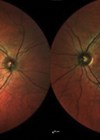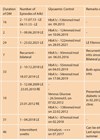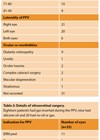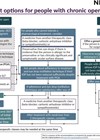Ophthalmology archive for 2022
Insects, swelling and sight loss: a case of orbital inflammatory syndrome
Despite being the most common cause of painful orbital mass in adults and the third most common orbital disease, orbital inflammatory syndrome still proves to be a difficult ocular condition to diagnose, treat, and manage. A 41-year-old lady presented to...
Doing a systematic review: a users’ guide for foundation doctors
Research is increasingly important for junior doctors and systematic reviews (SRs) are a great place to start. Carrying out an SR can help a doctor demonstrate commitment to a specialty, develop research skills and get results quickly. This article aims...
An eye on novel anti-cancer agents: an evidence-based approach to external eye assessment
Novel anti-cancer therapies have led to significant advancement in cancer treatment, however, they can be associated with external eye complications. It is important to be mindful of such adverse effects during assessment of patients enrolled in clinical trials. Annually, approximately...
Neonatal hypoxic ischaemic encephalopathy with imaging abnormalities in the occipital lobe – how to counsel the parents
Case A baby boy, with a background of intrauterine growth restriction, was born at 37 weeks and three days gestation via forceps delivery. The baby was born in poor condition, with low heart rate, poor respiratory rate, poor colour and...
My Top Five: Ophthalmology TikTok accounts, educating and entertaining both the public and trainees
In the modern world, our electronic devices have now become an extension of ourselves, with our reliance and use of them of comparable importance to an arm or a leg. The importance of electronic devices can also be seen in...
Possible COVID-19 related maculopathy
COVID-19 is being investigated as a potential cause for various ocular diseases, with growing evidence of related retinal vascular changes, that vary from isolated cotton wool spots and retinal haemorrhages to retinal vascular occlusions [1.2]. COVID-related macular affection has also...
The increased use of surgical adjuncts in complex cataract surgeries undertaken in the COVID-19 pandemic
The authors explore whether more complicated cataract operations have been performed in the NHS since the start of the coronavirus pandemic. Restrictions in availability of access to elective cataract surgery during the COVID-19 pandemic and subsequent case prioritisation based on...
Prevalence of acute anterior uveitis in diabetic patients attending diabetic eye disease clinics
The authors share their investigation at Manchester Royal Eye Hospital into the association between diabetes and AAU. The global prevalence of diabetes mellitus (DM) is rapidly rising from an estimated 9.3% in 2019 to 10.2% by 2030 [1]. The link...
Does vitrectomy increase the risk of glaucoma? A retrospective review from a UK hospital
The authors investigate what proportion of patients undergoing pars plana vitrectomy subsequently developed ocular hypertension or a diagnosis of glaucoma. A systematic review carried out in 2017 including seven studies found that there is evidence that pars plana vitrectomy (PPV)...
Ambitions for sustainable service recovery amidst an escalating post-COVID backlog
Rod McNeil reviews plans, activity and solutions to better address the post-COVID backlog and bolster sustainable service recovery. Ophthalmology was the busiest outpatient specialty during the three years to March 2020 across the English NHS and again recorded the highest...
Ophthalmic Aid to Eastern Europe (OAEE)
Peter Cackett, Tim ffytche and Dr Irina Gout reflect on historic ophthalmic aid sent to Eastern Europe. This article was written prior to the horrific events in Ukraine. An appeal for funds and equipment may be made by OAEE later...
How to pass the FRCOphth Part 1 as a foundation trainee: some practical tips
Attempting the FRCOphth Part 1 examination as a foundation trainee requires significant time and financial commitment. Unlike the MRCP and MRCS examinations, the curriculum of this exam does not overlap with the undergraduate syllabus. As such, it is a steep...


